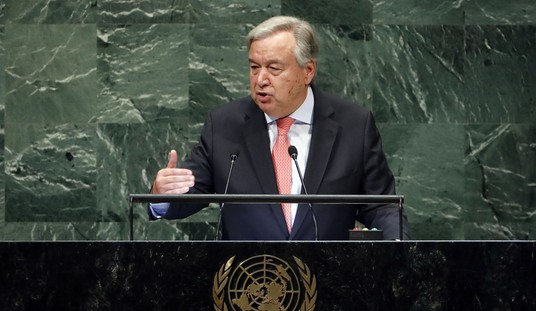The terrible story of Brittany Maynard, the young woman suffering from terminal brain cancer who has chosen to end her own life, has once again stirred public debate over end of life medical care, patient choice options and religious and moral questions. The video of her discussion of her situation has millions of views already. She has clearly made her own choice in this matter, but is only one of millions each year facing a similar dilemma.
If everything goes as planned in her life, 29-year-old Brittany Maynard’s death will occur on Saturday Nov. 1 — in her bed, on an upper floor of her Portland, Oregon home, with cherished music filling the room.
Lately, though, nothing in Maynard’s life has flowed like she once dreamed — no children with her newlywed husband, no more time. She has brain cancer, grade 4 glioblastoma. In April, a doctor told her she had six months to live.
Now, Maynard has embarked on a rare farewell bathed in politics and poignancy — all painstakingly organized and openly shared, she said, in a bid to help to change laws for dying Americans who feel they are forced to endure the full, gruesome descent of a terminal illness.
This is a subject which we’ve had to deal with in our family and one that I’ve personally debated for a long time. It’s not an easy question for many people, though the spiritual and social dilemmas surrounding it can lead to battles which come off as unseemly when dealing with a young person facing their own mortality. I will say that I echo a several of of the sentiments expressed by Doug Mataconis on this one.
Maynard’s case is attention grabbing, of course, because it doesn’t fall into the typical category of the terminally ill person who, absent the choices that Oregon law gives to her, would otherwise be facing a future where she will waste away and suffer until they die, typically doped up on morphine and other painkillers. Instead she’s young, seemingly healthy looking to outside observers, and arguably a textbook case for the kind of person who should be “fighting” their cancer rather than looking forward to an end that is now less than a month away. It strikes me, however, that her case is the perfect example of what this issue is really all about. In the end, we are talking about the right of an individual who is faced with a terminal illness to end their life on their own terms rather than to follow the supposedly acceptable course of allowing themselves to be pumped full of endless amounts of drugs that don’t end up working and just make an already painful situation, for the patient and their loved ones, even worse. Then, when the end comes and its obvious that further treatments won’t work, the only option modern medicine gives people is to suffer away until the end, with their body pumped so full of painkillers that they are barely aware of what’s going on around them. Is it really any surprise that someone would want to avoid this fate when presented with their options beforehand?
I’ve seen some powerful, compassionate pleas from a differing point of view, particularly those surrounding another young woman facing the same tragic choices. Kara Tippetts is begging Brittany to reconsider.
Tippets, a mother of four and the author of the new book “The Hardest Peace,” recently released the open letter to Maynard that addresses end-of-life issues and details her faith in Jesus Christ, according to Deseret News.
“My heart ached for you, and I’m simply grieved by your terminal brain tumor, for the less than 6 months the doctor’s gave you, you just past your 29th birthday,” Tippets wrote in a blog entry for Holy Experience. “I too am dying, Brittany.”
Speaking with “a heart full of love,” Tippets thanked Maynard for sharing her story and said that she understands what it’s like to know that one’s life is coming to a close — but added that she believes Maynard is making a terrible mistake.
“Suffering is not the absence of goodness, it is not the absence of beauty, but perhaps it can be the place where true beauty can be known,” Tippetts wrote, claiming that people aren’t meant to choose when they take their last breath. “In your choosing your own death, you are robbing those that love you with the such tenderness, the opportunity of meeting you in your last moments and extending you love in your last breaths.”
Tippetts has made her own choice as well, and it couldn’t have been easy. These are questions which the vast majority of us don’t have to deal with until very late in life, if even then. But the question here really does come down to choice in my opinion. And we should be reluctant to pass judgement on others who are walking that path, no matter how they decide. It’s important to draw a distinction here between this situation and discussions of death panels or government agents urging people to “pull the plug.” This is a completely different subject, though the circumstances leading to Maynard’s decision play into those questions as well.
Not everyone is going to be as brave (if that’s the right word) as Ms. Tippetts. The current path to death for such patients, as handled by medical authorities in the majority of states, does indeed result in a very real and very terrible end, both for the patient and their loved ones who have to watch them deteriorate in their final days, weeks and months. For an revealing look at the difference between the public and private face of how medical professionals view these questions, I suggest you look over How Doctors Die by Ken Murray. The people suggesting and administering increasingly desperate and invasive procedures to extend life frequently choose not to put themselves through the same grinding process.
Years ago, Charlie, a highly respected orthopedist and a mentor of mine, found a lump in his stomach. He had a surgeon explore the area, and the diagnosis was pancreatic cancer. This surgeon was one of the best in the country. He had even invented a new procedure for this exact cancer that could triple a patient’s five-year-survival odds–from 5 percent to 15 percent–albeit with a poor quality of life. Charlie was uninterested. He went home the next day, closed his practice, and never set foot in a hospital again. He focused on spending time with family and feeling as good as possible. Several months later, he died at home. He got no chemotherapy, radiation, or surgical treatment. Medicare didn’t spend much on him.
It’s not a frequent topic of discussion, but doctors die, too. And they don’t die like the rest of us. What’s unusual about them is not how much treatment they get compared to most Americans, but how little. For all the time they spend fending off the deaths of others, they tend to be fairly serene when faced with death themselves. They know exactly what is going to happen, they know the choices, and they generally have access to any sort of medical care they could want. But they go gently.
With or without government permission or medical help, many people are going to make this choice when faced with the ultimate question. They have to struggle with asking whether life is indeed so precious that a few more hours or days of it are worth the cost if that time is spent medicated beyond conscious activity while loved ones weep at their bedside. Those who determine that is is not and who can’t obtain competent medical advice will choose a gun in their mouth, a noose, a car “accident” or some cocktail of pills and alcohol which they cobble together themselves, often with disastrous results in failed attempts. So I’m not going to judge either Maynard or Tippetts and can only hope that others will spare me such judgement should I wind up facing the same, awful decision point.







Join the conversation as a VIP Member